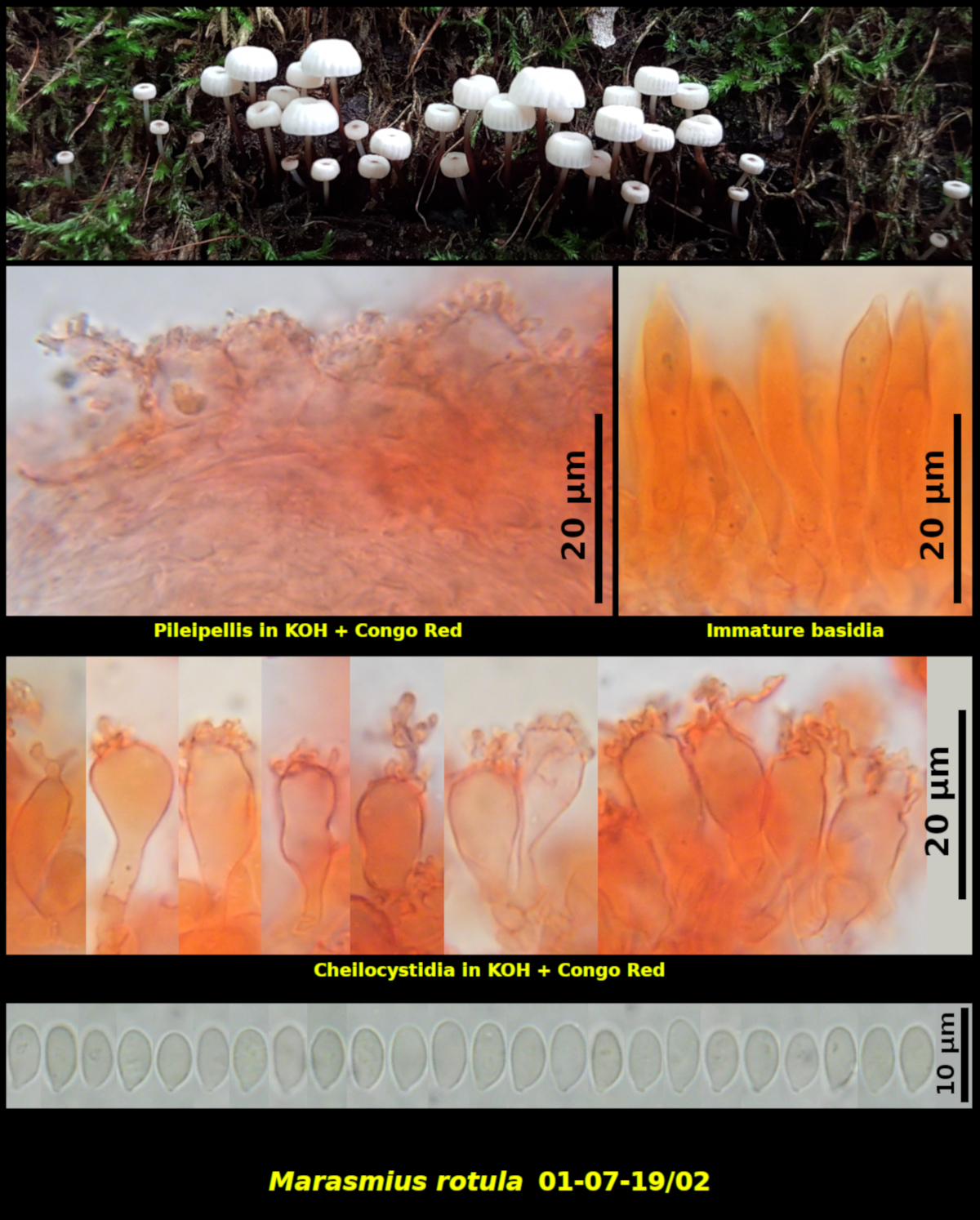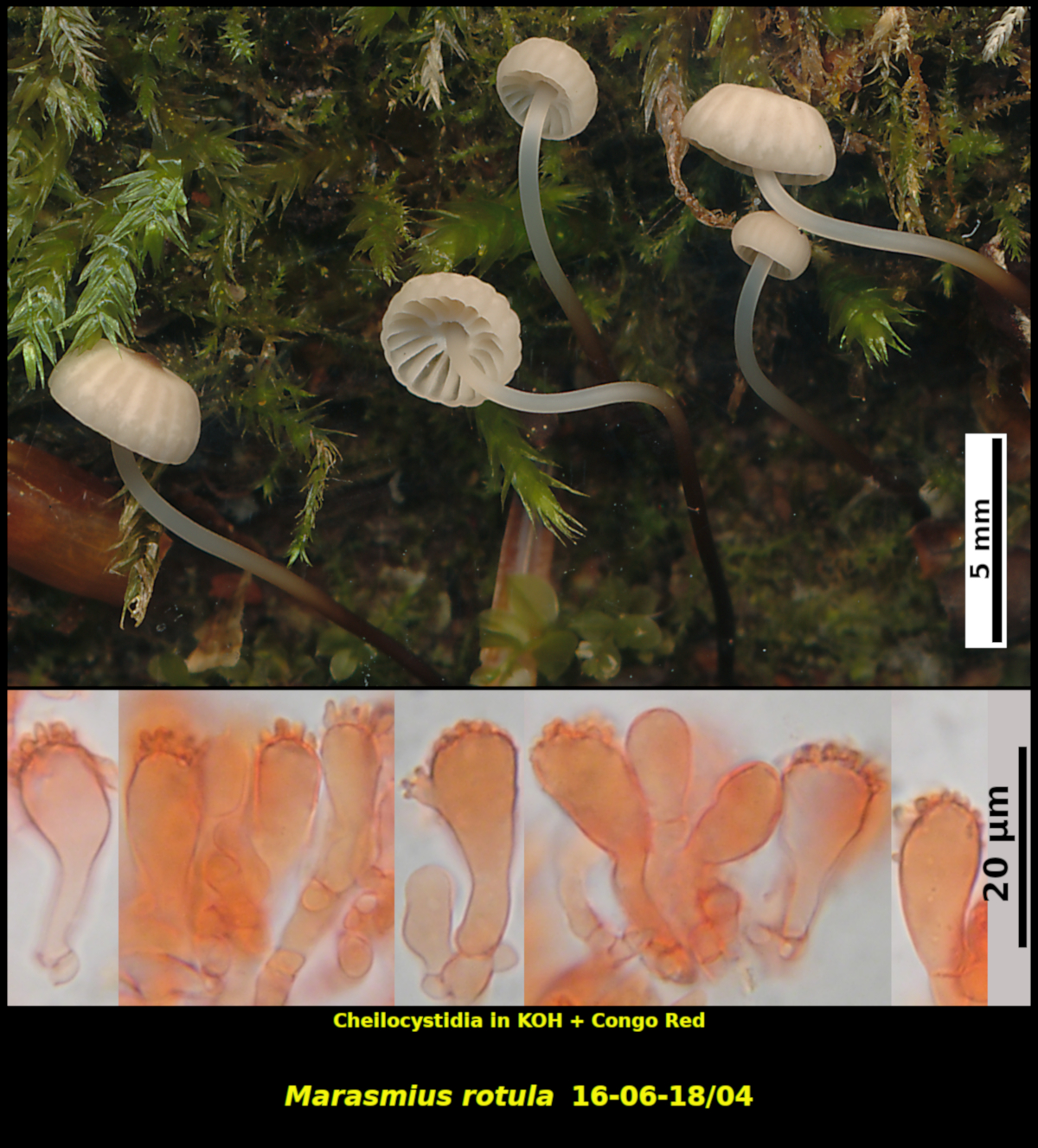Fleshy Fungi of New Brunswick >>
Marasmius rotula
Marasmius rotula (Scop.:Fr.) Fr.


1. Gregarious (many) on a decaying log of Acer saccharum in forest dominated by Acer saccharum, Betula papyrifera and Fagus gradifolia, Kennedy Lakes Protected Natural Area, New Brunswick (01-07-19/02).
2. Gregarious (many) on a rotting hardwood log, Spednic Lake Provincial Park, New Brunswick (16-06-18/04).
Basidiospores white in spore print, dacryoid to ellipsoidal, smooth, not changing colour in Melzer’s Solution, 5.7-7.2 X 3.1-3.7 µm, Q = 1.58-2.07 (average[34]: 6.3 X 3.5 µm, Q = 1.82). Cheilocystidia forming a continuous sterile margin in some lamellae and sparse to lacking in others, clavate, covered apically with numerous simple to branched coralloid processes (“broom cells”), clamped at base. Pileipellis a hymenoderm of broom cells similar to the cheilocystidia. Description based on 01-07-19/02)
Marasmius rotula, in contrast to many of the larger and more fleshy species, is a mushroom adapted to long-term dispersal. Whenever there is sufficient moisture the fruiting bodies rehydrate and within a few hours are able to produce a crop of basidiospores and release them. It can then dry back down in readiness for the next wet spell. In this way it is similar to many of the more leathery Corticioid and sterioid fungi found growing abundantly on overhanging dead branches and the undersides of logs.
It is easy to recognize M. rotula in the field due to the unusual gill attachment involving a collar-like ring surrounding the stipe. The white pileus with a brown umbo or central depression and its occurrence in dense masses on decaying hardwoods are also diagnostic.
Photographs: D. Malloch (16-06-18/04, 01-07-19/02).